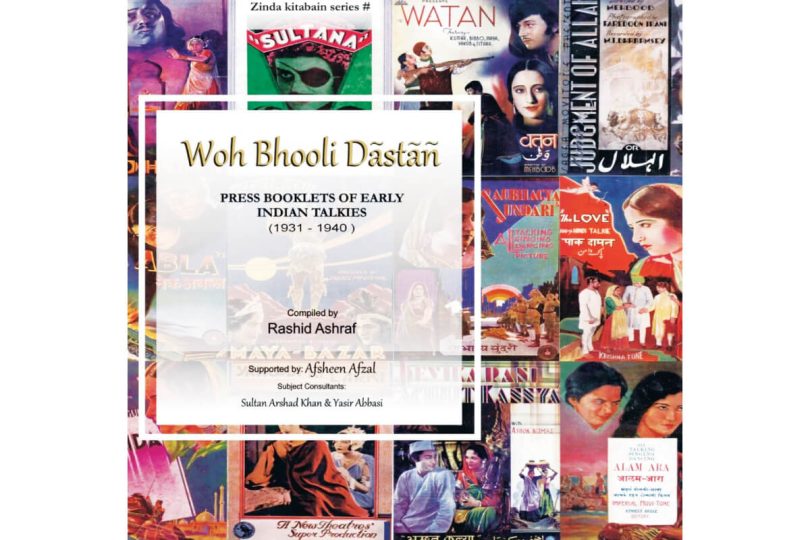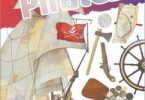Before 1947, India and Pakistan were one country, ruled by the British who were fond of cinema and films. Naturally, the interest was transferred to the people who lived under the British rule and that resulted in sharing a cinema culture that was at par with the international circuit. Those were the days when films were the only visual medium to entertain the masses, and artistes were addressed as Sir and Miss. Atlantis Publications’ heavier-than-thou Woh Bhooli Dastan takes the readers back to the time when the cinema industry was finding its feet in British India, and cinema was evolving in the region from luxury to necessity.
What does this book have that others catering to the same readers don’t, you may ask. Well, this book is a compilation of rare press booklets of early Indian talkies, films that were released between 1931 and 1940. The rarity of these booklets can be judged from the fact that even Indian folks associated with ‘Bollywood’ don’t have these rare gems, which have been compiled and published under the guidance of Pakistani author, Rashid Ashraf.
It may be difficult for some to comprehend how a book featuring booklets before Pakistan’s creation would help the readers understand the past. Only those who believe in ‘the past is the best teacher’ would understand because to them, it doesn’t matter whether the past is 8 minutes back, or 80 years. They know how to learn from whatever happened in a certain time period and implement that in the current era, without worrying about the results, which are usually positive.
Not only do some of the big films of that era such as Alam Ara, Gul Bakawli, Achhut Kannya, or Alibaba mentioned in these pages, their press booklets give the readers an insight into how those films were marketed back in the day. From a synopsis (in English, Hindi, and Urdu) that ends in a cliffhanger to the name of the cast, the crew and some stills from the film take the readers down memory lane and keep them there until they finish reading this compilation.
Its ability to make the readers visualize the past makes this book a perfect guide for how people used to live back in the day. Even if you aren’t a film buff, this book will explain to you how people spent their time in an era long before the advent of television, the internet, or even mobile phones. The book reveals what steps the film producers took to ensure that their film was screened, and helped them garner money for their other projects.
And if you still think that the 1930s wasn’t an advanced era, think again because that was perhaps the only time when the film industry in the subcontinent was at par with that in the other parts of the world. Whatever technology was used to make films in the West was used in this part of the world, giving the films the regal touch that’s missing in this day and age. The plots might seem dated but the execution doesn’t and neither does the outcome, which in most cases is ‘happily ever after’.
Unlike many books featuring posters (rare or common, that’s not the issue), this book gives the poster an extra blank page on the opposite side, which keeps the poster from deteriorating. Interesting, isn’t it? That’s not all, most of the songs in the films are also mentioned here, giving music aficionados something to look forward to. With renowned names like Sultan Arshad and Yasir Abbasi as consultants, the subject is bound to have authenticity because the two gentlemen are known for their meticulous work in music.
Don’t be surprised if you come across a stunning beauty named Naseem in some later film posters, or see a young handsome Indian actor in the press booklet of Premi Pagal, because they were well-known people, whose kids also entered showbiz. The stunner was actress Saira Banu’s mother Naseem Banu while the youngster who plays the titular role in Premi Pagal is none other than Noor Mohammad Charlie, India’s first comedy king. He was the father of actor Latif Charlie, grandfather of TV host Dino Ali, and the great-grandfather of actor Komail Anam, who is the son of actor and singer Khaled Anam, making the Peera Ho crooner his grandson-in-law.
The presence of the booklets’ English, Hindi, and Urdu section attracts readers of all languages who choose to read the text in favourably their mother tongue. You might laugh at the text here and there but that’s because those were the in fancy days of the cinema industry, a time when Jaddan Bai, Sanjay Dutt’s maternal grandmother, and Nargis’ mother was part of the industry, and legendary PTV actress Begum Khursheed Mirza made her debut as Renuka Devi.
If that doesn’t satisfy you, how about searching for Madam Noor Jehan’s first film as an actress (Baby Noor Jehan) or looking for a Ranbir Kapoor lookalike who is part of some of the booklets. That guy resembles the hottest Kapoor in town because he was the one who transferred his genes to them, and if you are still clueless about his identity, that guy was Prithviraj Kapoor, Raj Kapoor’s dad, Rishi Kapoor’s grandfather, and Ranbir Kapoor’s great grandfather, and was considered one of the most handsome actors of his generation.
It would be correct to say that this book is nothing short of a treasure trove, and brings back memories of films that are either lost in oblivion or destroyed in some accident. All the 50-odd films covered here are somehow part of the evolution of the film industry in the subcontinent that went on to become Indian and Pakistani film industries. From the first talkie Alam Ara to the first director Mehboob Khan’s version of Alibaba, every film is given the coverage it deserves, and takes you towards a destination, the journey of which begins from here. -Ends







